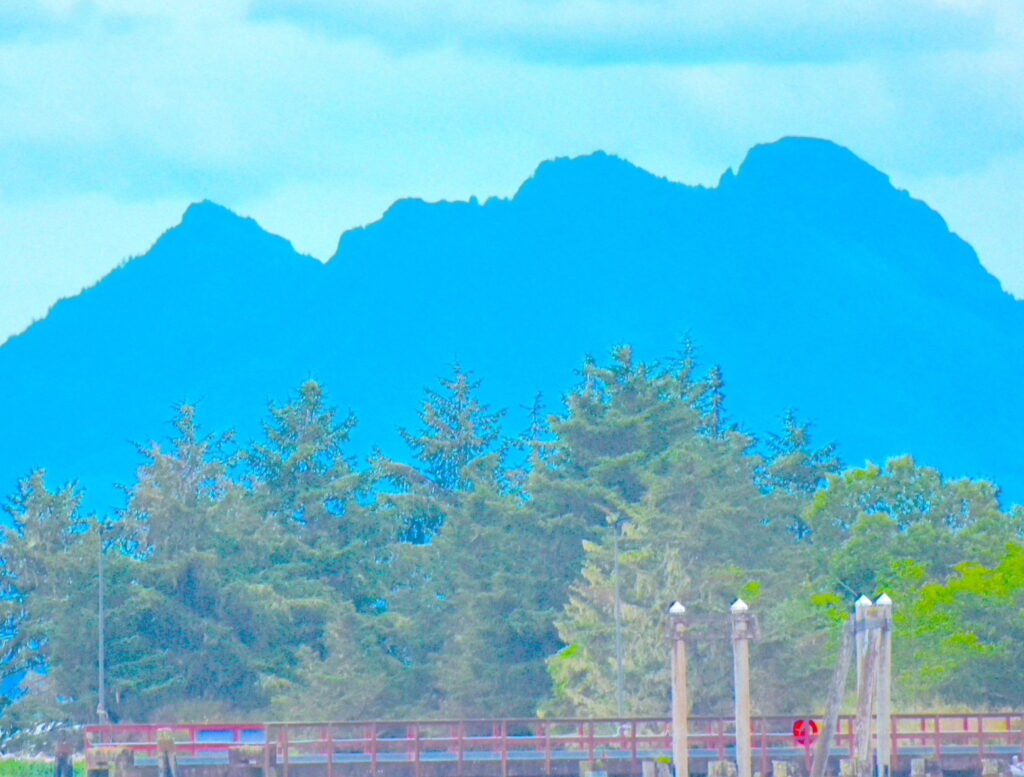One hometown is like any other town they say.
Whoever ‘they’ are, they’re wrong.
“A hometown is where young people bide their time before their real life begins,” goes the standard line.
“It’s where kids first learn about the real world without bearing the consequences.”
Not the case when the hometown is North Bend, Oregon.
Here’s why:
To begin, North Bend and Coos Bay anchor the largest metro area on the Pacific coast between San Francisco and Seattle.
To call it a small town is misleading. But there’s more to it than the number of people.
After all, the most densely populated town in America, Guttenberg, New Jersey has only 11,000 people. Living on 0.196 of a square mile.
Is Guttenberg a small town? Not when 9 of the top 10 most populated towns are in the New York City metro area.
Way over on the west coast is a different kind of town, one with room to roam. 10,000 people living on 5 square miles doesn’t create the rat in a cage comparison to some towns.
One Hometown View
People living around NYC have a view of the city they love and can’t ever imagine leaving. From as far away as Delaware, people say they can’t imagine moving any further away from the Big Apple.
Even with Philadelphia right next door, let alone their own Wilmington, the big city is a big draw.
Believe it or not, North Bend has the same draw.
I met a guy from Coquille. When he learned I was from North Bend he said, “Oh, a city boy.”
It’s all in the context of where you come from.
Besides, how small is considered small in a town surrounded by forest?
Oregon is the largest lumber producer in the U.S. With 30.5 million acres of forestlands, about 50% of the total landmass of the state is covered in forest. Oregon exports more forest products and raw wood products than it imports and is home to many leading wood and paper product manufacturers, including Weyerhaeuser, Georgia-Pacific, Roseburg Forest Products and The Collins Companies. About 75% of all wood products made in Oregon are sold outside the state.
Instead of tall buildings on the horizon like the view from New Jersey, the big stuff in North Bend were wood chip mountains.
The Great Outdoors Difference In Hometowns
Too often the people living in densely populated areas have little nature to commune with. Instead, they depend on sidewalks and parks and man-made nature organized for best effect.
Tight living Easties depended on Frederick Law Olmsted, along with his father and brother, for their nature experience.
From Central Park in Manhattan, to Prospect Park in Brooklyn, and many parks in between, the Olmsted’s had a vision. That vision also included the Biltmore Estate in Asheville, North Carolina. Their vision of nature saved many a family feeling trapped in a small apartment.
Their nature vision extended across America.
Eventually, the firm worked on about 200 projects in Washington, Oregon, and British Columbia. Their commissions included parks for additional cities, college campuses, exposition grounds, public landscapes such as the Washington capitol grounds, residential neighborhoods, and more. They also designed about 150 private estates, some of which are now public gardens.
Although Olmsted designs often included formal elements, they are best remembered for naturalistic landscapes in which world-weary urbanites could restore their spirits inspired by the tonic effects of nature. The Olmsteds believed such parks should be scattered throughout the city, within easy walking distance of each residence. As important as parks were, there was more. The Olmsted plan linked these parks with boulevards and tree-lined parkways. They also recognized the need for playgrounds, and placed them in many neighborhoods.
North Bend Nature Was Just Across The Street
The first house I lived in was across the street from sand dunes and woods.
As the family grew, we moved to a bigger house across the street from sand dunes and woods.
Older teens used the dunes to play games like King of the Hill.
Nature wasn’t organized as a plan to get people outside to enjoy the fresh air like urban parks. The nearby dunes and woods were the place to go when someone’s mom said, “Go outside and play.”
Climbing trees and jumping off sandstone cliffs to a soft sand landing was a normal day, not a ‘special day’ planned months in advance.
Growing older and more mobile, the territory included the huge tract of sand dunes on the way to Horsefall Beach and the green tree tunnels on the Cape Argo Highway.
The hand of man was visible on the roads, but the natural environment felt endless and wild.
Growing up in places like North Bend created a unique mindset. For the locals who live there and see it all the time, it’s home and familiar. Others who grew up there and moved away see it through a different lens.
From Coos River to Coos Bay to the Pacific ocean, memories flow like liquid dreams. Dean’s Mountain to swampy lowlands to the beach feels like compressed time.
Then, when adult kids decide North Bend is the perfect place to hold a Bachelor’s Party, it all comes home to roost.
Not many are lucky enough to have one hometown ahead of all others.
Leave a comment if your hometown was memorable, and why.
Or why not.



